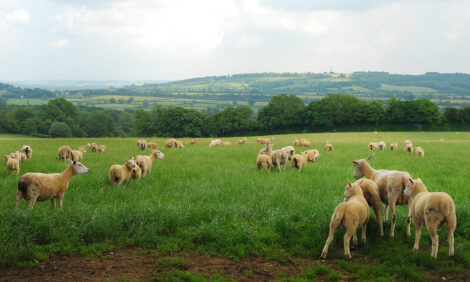



Supporting Australia's flood-affected producers
AUSTRALIA - While the focus during the catastrophic flooding in north-west Queensland is naturally on the current emergency situation, MLA has started to consider the longer-term impacts on businesses, families and cattle supply.
The Southern Gulf and North Queensland Dry Tropics were the most heavily affected regions, as well as parts of the Northern Gulf, the Desert Channels and Terrain NRM (see distribution maps). The potential combined number of cattle in these regions is between 3 to 3.5 million head.
As at 30 June 2018, the total Australian cattle herd was around 27.2 million. Queensland accounts for about 42% of the Australian herd, which puts the Queensland cattle numbers at around 11.6 million head. Therefore, as way of an example, a loss in the region of 300,000 head would represent 2.6% of the Queensland inventory and a 1.1% decline in the total Australian cattle herd.
Impact to Producers and Markets
MLA's Chief Marketing and Communications Officer Lisa Sharp shares how the situation might affect the Australian cattle market and what industry systems are in place to support producers:
Q: How is industry supporting flood-affected producers?
A: MLA has set up a page on its website offering a wide range of information and advice to producers, including links to emergency and financial assistance, farm management resources and contacts for personal support. The page can be accessed here.
We’ve been in regular contact with industry organisations, including the lead agency, AgForce. The Cattle Council of Australia, National Farmers Federation and Red Meat Advisory Council are also offering support to help ensure important messages reach affected producers.
Personally, I've spoken to some producers in the affected areas and I'm amazed at how resilient they are. They’ve been very upfront and open about their needs and clearly articulated how devastating an event such as this is for their families and businesses.
Q: What will stock losses mean for the cattle market?
A: As the situation’s still unfolding, it's impossible to ascertain the extent of the impact to cattle numbers and, hence, prices.
The floods may lead to tighter supply and may subsequently impact prices in the short term; however, there are numerous factors that also influence prices, including seasonal conditions across other key cattle production regions, domestic and global demand, production from overseas competitors, currency movements and feed costs.
Production over summer is generally lower in Queensland. However, later in the year, there could be a tightening of supply as producers hold stock over.
While some parts of Queensland are experiencing this natural disaster, Australia continues to produce and supply quality red meat from other regions.
Q: What impact will the floods have on industry’s integrity programs such as the National Livestock Identification System?
A: The immediate focus is on helping those affected in the regions. However, in the next few weeks, the beef supply chain will require support and guidance on how to manage their responsibilities associated with the National Livestock Identification System (NLIS) and Livestock Production Assurance (LPA) program.
NLIS is managed and regulated in Queensland by the Queensland Department of Agriculture and Fisheries (QDAF). MLA’s subsidiary, Integrity Systems Company (ISC), oversees NLIS and LPA and will play a supporting role to QDAF in communication activities and supporting producers.
It's likely ISC will be required to utilise data within the NLIS database to assist identifying PICs on which livestock were recorded and support producers to update the database with stock losses.
MLA’s flood resource page includes information regarding ‘Managing NLIS and animal movements during natural disasters’, such as ‘How to identify and return displaced stock’. An FAQ page for flood-affected producers around the LPA program is also available.
For producers in the affected area that have been contacted recently to complete their LPA accreditation renewal process, a direct communication will be sent notifying them that their renewal requirements have now been deferred until further notice. Any upcoming LPA accreditation renewals scheduled for the affected region will be deferred until a future date.
Q: What research is MLA investing in related to climate events such as this?
A: A major initiative is called Forewarned is forearmed: managing the impacts of extreme climate events. This Rural R&D4Profit project provides improved forecasting for climate extremes such as heatwaves, frost, floods, and drought beyond the 7-day weather forecast out to seasonal timescales (6-12 months), providing options and tools for producers to proactively plan and manage for extreme events.
R & D investment continues across a range of projects identifying on farm technologies for the monitoring of livestock and infrastructure with applications to not only locate and count stock, but also identify safe areas, predict flood patterns and track missing livestock is possible.
TheCattleSite News Desk


